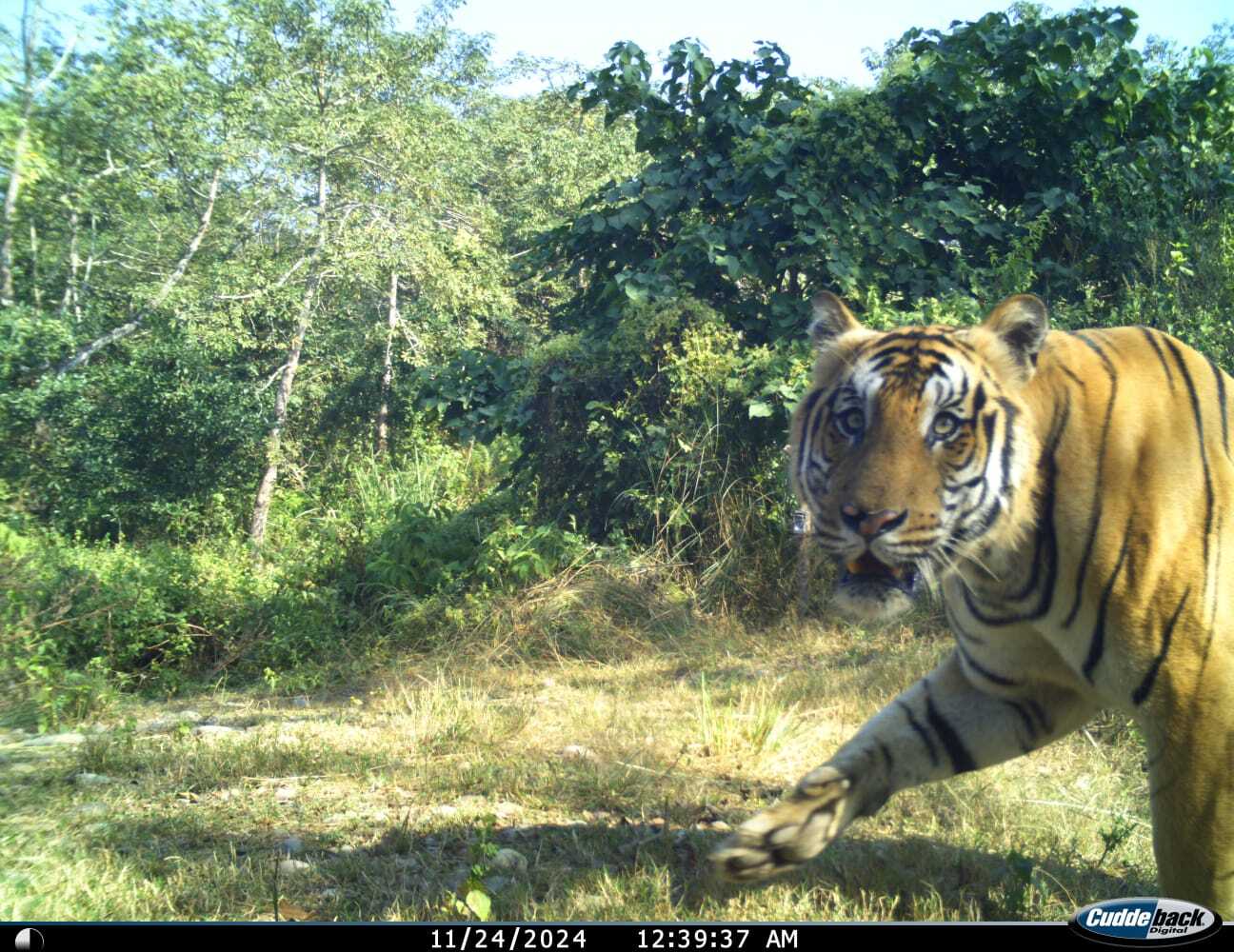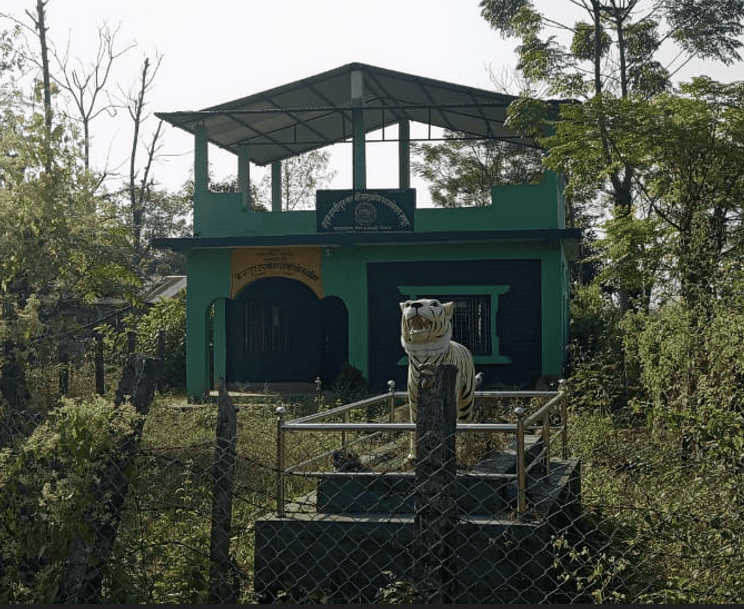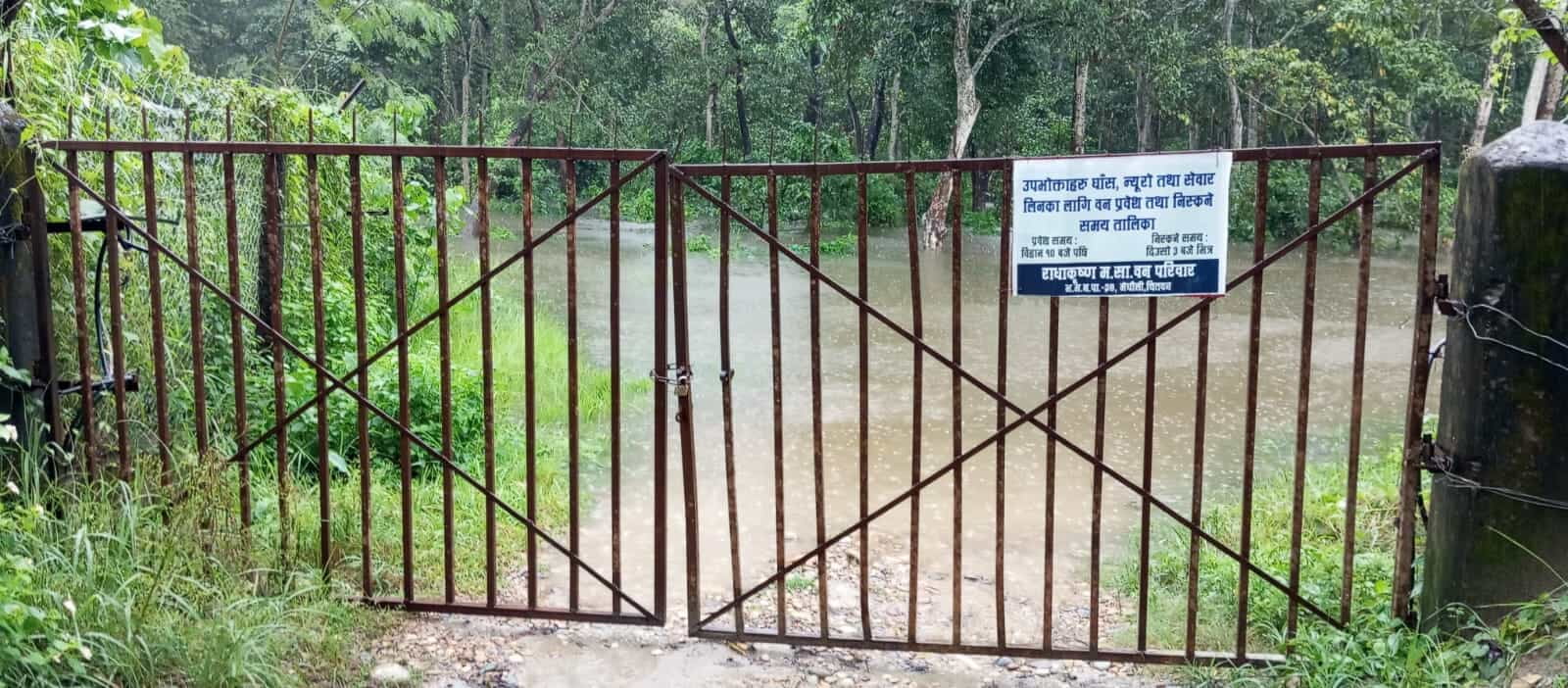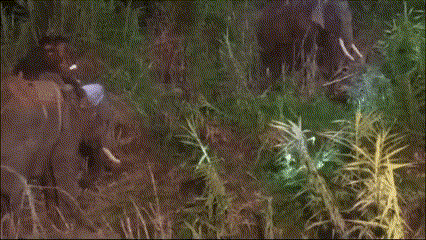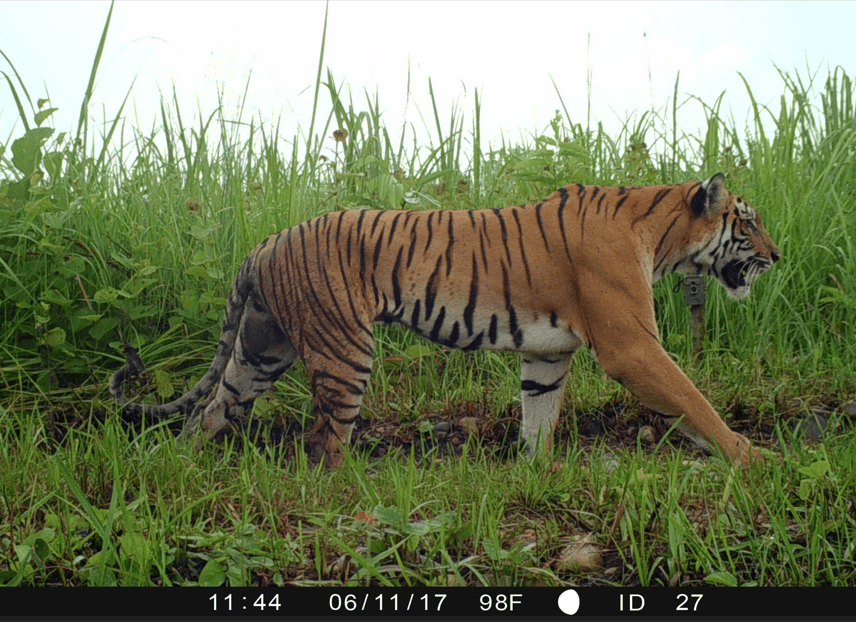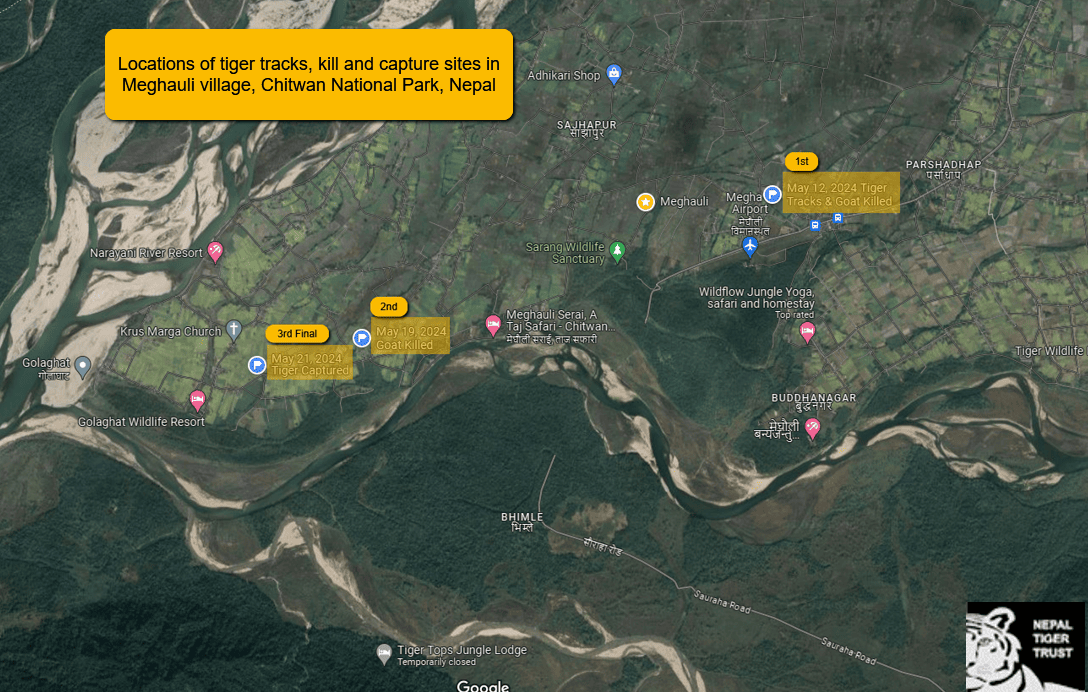When a wild tiger grabs a camera trap, it is often showcasing its natural curiosity and territorial behavior. Tigers, being apex predators, are highly inquisitive about new objects in their environment. On November 24, 2024, a young male tiger grabbed a camera trap placed on a stump, carried it abou...
Blog categorized as Conservation
Tiger Showing Natural Curiosity
Camera Trapping Resumes for 2024-25 Season
The tiger monitoring project using camera trapping has resumed as of November 18, 2024, nearly two months after being paused. The initial phase began on September 18, 2024, but operations were halted due to heavy flooding on September 28, 2024. The flooding damaged 12 cameras in the field sites and ...
Environmental Challenges of Camera Trapping
Figure 1: Meghauli Community forest entrance gate flooded
Camera trapping is a powerful tool for wildlife monitoring and conservation, but it comes with several challenges, including environmental factors. Here, we encountered specific flooding issues at our camera trapping site in Chitwan. Bel...
Tiger Monitoring Season 2024-25 Begins
Nepal Tiger Trust Technicians Helping Capture Problem Tiger
Figure 1: Problem tiger attacking technicians trying to dart and capture it
Early morning along the Narayani River in Beltandi, near the town of Bharatpur, a tiger attacked a man. The Nepal Tiger Trust technicians assisted with pugmark identification, while Chitwan National Park authorities used a dr...
Meghauli Pothi: The Female Tigress
Figure 1: Meghauli Pothi June 2017. Individual tiger is identified using stripe patterns
Meghauli Pothi was born in August 2014 and has been closely monitored since then. She has exhibited remarkable reproductive success and over her 10-year lifespan, she has given birth to three litters, total...
How Nepal Tiger Trust Technicians Helps Identify and Capture Problem Tiger
Long Term Tiger Monitoring Project
The Long-Term Tiger Monitoring (LTTM) project was initiated in 1980 by Dr. Charles McDougal to understand the population dynamics, life histories, and reproduction of tigers living in an area of approximately 100² km in the western end of Chitwan National Park. Funded by the International Trust for ...

